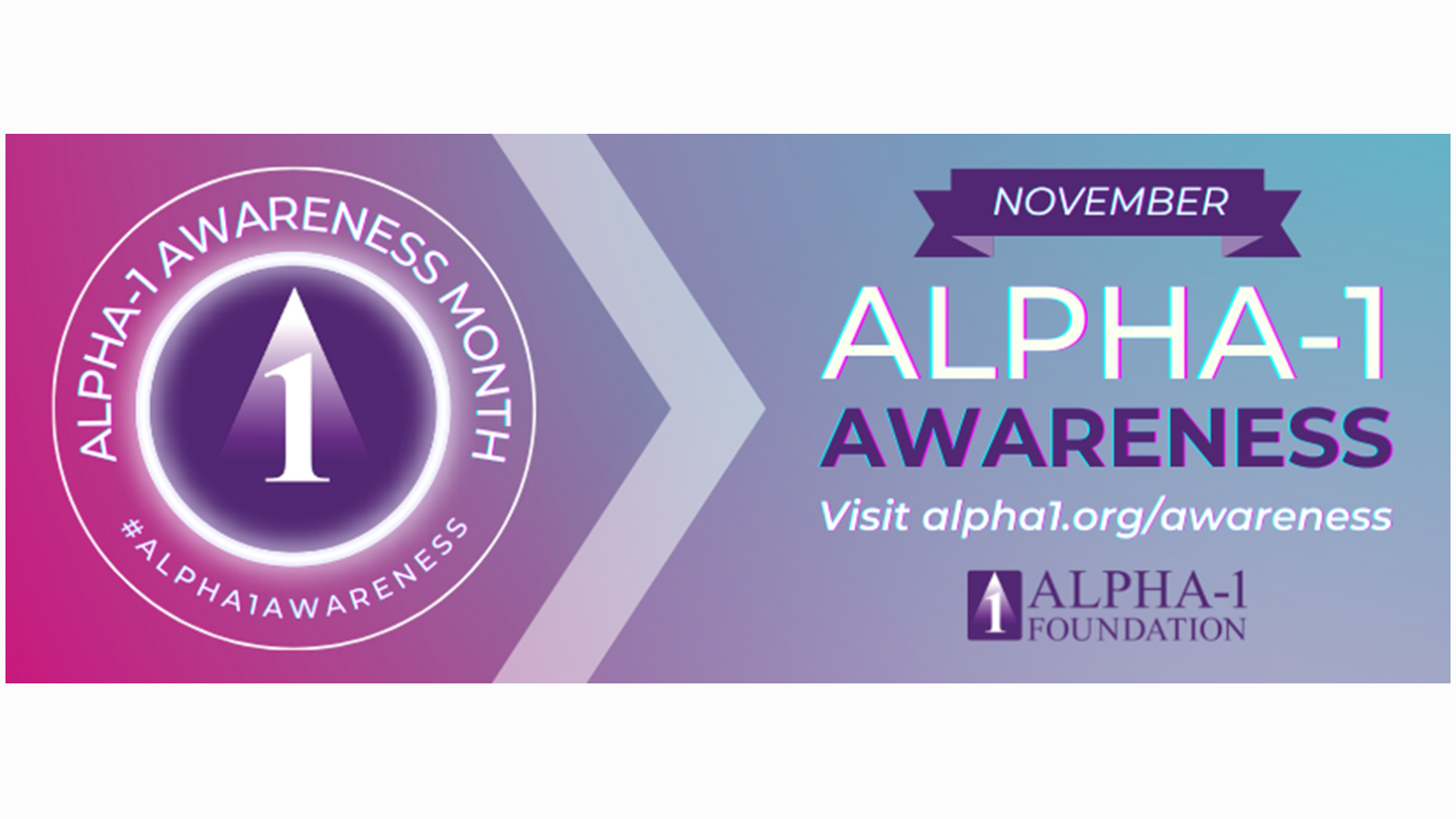November marks both Alpha-1 and Chronic Obstructive Pulmonary Disease (COPD) Awareness Months. Both are serious lung conditions that have overlapping symptoms like wheezing, a cough that won’t go away, or trouble breathing. However, the root cause of each disease is different and so is treatment.
How is Alpha-1 different from COPD?
The main causes of COPD are external factors such as tobacco smoke and exposure to air pollutants in the home and workplace. Alpha-1 Antitrypsin Deficiency, on the other hand, is a rare genetic condition. Those with Alpha-1 are unable to produce the alpha 1 antitrypsin (AAT) protein, which plays an important role in protecting the lungs from inflammation caused by infection and inhaled irritants. An insufficient amount of AAT protein in the blood can lead to lung damage and liver disease.
Signs and symptoms for Alpha-1 typically occur between the ages of 20 to 40 years old. However, the journey to diagnosis can be long. The average time between initial symptoms and a correct diagnosis is 7.8 years.
“Alpha-1 is a rare disease that is not well-recognized and as a result is under-diagnosed,” said Dr. Paolo Bajcic, a Senior Director of U.S. Medical Affairs for CSL Behring. “As Alpha-1 is a progressive disease that worsens over time, if left untreated, it can lead to other serious lung diseases such as emphysema and COPD.”
While an estimated 100,000 people in the United States have Alpha-1, approximately 90 percent have not been properly diagnosed. Moreover, an estimated 3 percent of all people diagnosed with COPD may have Alpha-1. An early and accurate diagnosis would allow patients and their doctors to discuss preventative care and treatment if needed. Because Alpha-1 can be passed from parent to child, it is also important to know as part of your family health history.
Diagnosing and treating Alpha-1
Alpha-1 can be diagnosed with a simple blood test. It is currently recommended that all individuals diagnosed with COPD or unexplained bronchiectasis (thickened air passages in the lungs) be screened for AAT deficiency regardless of age or ethnicity.
Following diagnosis, the American Thoracic Society guidelines state that augmentation therapy – a lifelong treatment in which AAT protein from donated plasma is given intravenously (IV) – may improve survival or reduce the rate of decline in lung function. These IV infusions increase the AAT protein levels circulating in the blood and lungs.
Learn more about Alpha-1, testing and tips from patients for those newly diagnosed.



